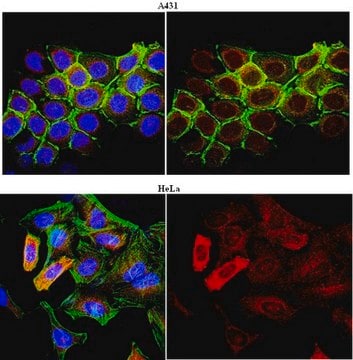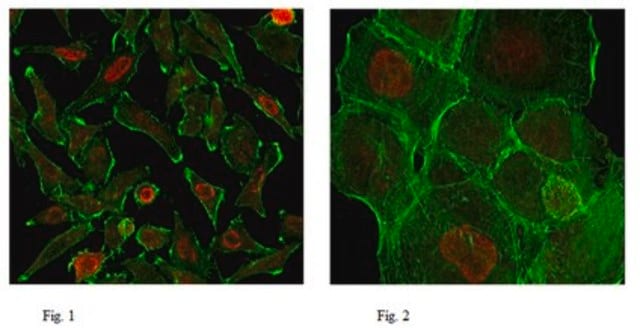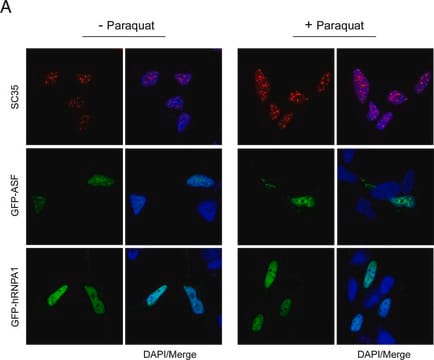04-1572-I
Anti-RNA polymerase II subunit B1 (phospho-CTD Ser-5) Antibody, clone 3E8
culture supernatant, clone 3E8, from rat
Sinonimo/i:
DNA-directed RNA polymerase II subunit RPB1, RNA polymerase II subunit B1, DNA-directed RNA polymerase II subunit A, DNA-directed RNA polymerase III largest subunit, RNA-directed RNA polymerase II subunit RPB1
Scegli un formato
About This Item
Prodotti consigliati
Origine biologica
rat
Livello qualitativo
Forma dell’anticorpo
culture supernatant
Tipo di anticorpo
primary antibodies
Clone
3E8, monoclonal
Reattività contro le specie
mouse
Reattività contro le specie (prevista in base all’omologia)
human (immunogen homology)
tecniche
ChIP: suitable
ELISA: suitable
western blot: suitable
Isotipo
IgG2aκ
N° accesso NCBI
N° accesso UniProt
Condizioni di spedizione
dry ice
modifica post-traduzionali bersaglio
phosphorylation (pSer5)
Informazioni sul gene
human ... POLR2B(5431)
Descrizione generale
Specificità
Immunogeno
Applicazioni
ELISA Analysis: A representative lot was used by an independent laboratory to detect RNA polymerase II subunit B1 (phospho-CTD Ser-5) in ChIP (Chapman, R., et al. (2007). Science. 318(5857):1780 -1782.).
Epigenetics & Nuclear Function
Transcription Factors
Qualità
Western Blot Analysis: A 1:2,000 dilution from a representative lot detected RNA polymerase II subunit B1 (phospho-CTD Ser-5) in 10 µg of untreated and lambda phosphotase treated NIH/3T3 cell lysates.
Descrizione del bersaglio
Linkage
Stato fisico
Stoccaggio e stabilità
Handling Recommendations: Upon receipt and prior to removing the cap, centrifuge the vial and gently mix the solution. Aliquot into microcentrifuge tubes and store at -20°C. Avoid repeated freeze/thaw cycles, which may damage IgG and affect product performance.
Risultati analitici
Untreated and lambda phosphotase treated NIH/3T3 cell lysates
Esclusione di responsabilità
Non trovi il prodotto giusto?
Prova il nostro Motore di ricerca dei prodotti.
Codice della classe di stoccaggio
10 - Combustible liquids
Classe di pericolosità dell'acqua (WGK)
WGK 1
Certificati d'analisi (COA)
Cerca il Certificati d'analisi (COA) digitando il numero di lotto/batch corrispondente. I numeri di lotto o di batch sono stampati sull'etichetta dei prodotti dopo la parola ‘Lotto’ o ‘Batch’.
Possiedi già questo prodotto?
I documenti relativi ai prodotti acquistati recentemente sono disponibili nell’Archivio dei documenti.
Active Filters
Il team dei nostri ricercatori vanta grande esperienza in tutte le aree della ricerca quali Life Science, scienza dei materiali, sintesi chimica, cromatografia, discipline analitiche, ecc..
Contatta l'Assistenza Tecnica.








